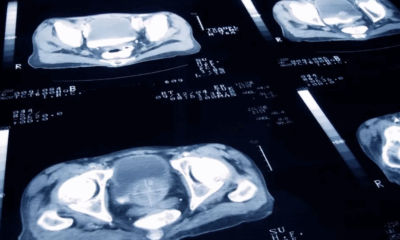Health
Benefits of Human Growth Hormones and Key Considerations for Safe Use

Human Growth Hormones (HGH) are naturally produced by the pituitary gland and play a crucial role in growth, body composition, cell repair, and metabolism. They are essential during childhood and adolescence for proper growth and development. In adults, HGH helps maintain, build, and repair healthy tissue in the brain and other organs. It also aids in muscle growth, boosts metabolism, and burns fat.
The Role of HGH in the Body
HGH stimulates growth in almost every tissue and organ in the body. It increases protein production, promotes the utilization of fat, interferes with the action of insulin, and raises blood sugar levels. HGH also stimulates the liver to produce an insulin-like protein that produces cartilage cells, which are essential for bone growth. This hormone is vital for muscle growth, bone density, and overall physical health.
Medical Uses of HGH
Medically, HGH is used to treat children with growth disorders and adults with growth hormone deficiencies. It is also prescribed for conditions such as Turner syndrome, Prader-Willi syndrome, chronic kidney disease, HGH deficiency due to pituitary tumors, and muscle wasting disease associated with HIV/AIDS. In these cases, HGH therapy can help increase height in children and improve muscle mass, bone density, and overall quality of life in adults.
HGH in Sports and Fitness
HGH has gained popularity in the sports and fitness world for its potential to enhance physical performance and muscle growth. Some athletes and bodybuilders use synthetic HGH to improve muscle mass, reduce fat, and enhance recovery times. However, the use of HGH for performance enhancement is controversial and banned by most sports organizations due to ethical concerns and potential health risks.
Risks and Side Effects
While HGH can offer significant benefits, its misuse or overuse can lead to serious health issues. Potential side effects include joint and muscle pain, swelling in the arms and legs, increased risk of diabetes, and abnormal growth of bones and organs. Long-term use of HGH can also lead to conditions such as acromegaly, where the bones of the face, hands, and feet become abnormally large.
Things to Consider When Buying Human Growth Hormones
If you are considering HGH therapy, it is crucial to consult with a healthcare professional to determine if it is appropriate for your condition. Here are some key points to consider:
- Prescription Requirement: HGH is a prescription medication. Ensure you obtain it legally through a licensed healthcare provider.
- Quality and Source: Only purchase HGH from reputable pharmacies or medical providers. Avoid to buy human growth hormones from online sources that may sell counterfeit or unsafe products.
- Dosage and Administration: Follow the prescribed dosage and administration guidelines strictly. Misuse can lead to severe health complications.
- Monitoring and Follow-Up: Regular monitoring by a healthcare professional is essential to track the therapy’s effectiveness and adjust dosages as needed.
- Potential Side Effects: Be aware of the possible side effects and report any adverse reactions to your healthcare provider immediately.
While HGH can offer significant benefits for those with specific medical conditions, it is essential to use it responsibly and under medical supervision. Misuse of HGH can lead to serious health risks, so always consult with a healthcare professional before starting any HGH therapy.
Health
Europe Faces Growing Challenges in Meeting Medical Care Needs, EU Report Shows

A new report has highlighted stark disparities in healthcare access across Europe, revealing that a growing number of citizens face unmet medical needs due to systemic issues such as high costs and long waiting times.
According to the latest data from Eurostat and the Health at a Glance: Europe 2024 report, 3.8 per cent of EU residents aged 16 and over reported unmet medical needs in the past year. However, the percentage climbs significantly when focusing solely on individuals who actively required healthcare services — with some countries reporting unmet needs among over 20 per cent of this group.
The causes are twofold: healthcare system barriers, including long waiting lists and treatment costs, account for 2.4 per cent of all cases, while 1.4 per cent stem from personal reasons such as fear of doctors, lack of time, or lack of knowledge about available care.
Unmet healthcare needs vary widely across the continent. Estonia tops the list within the EU, with 15.5 per cent of people reporting unmet needs, followed closely by Greece and Albania, each over 13 per cent. Even wealthier Nordic countries show surprising figures — Denmark (12.2 per cent), Finland, and Norway (over 7.5 per cent) — despite high healthcare spending. Conversely, countries such as Germany (0.5 per cent), Austria (1.3 per cent), and the Netherlands (1.4 per cent) report the lowest levels, pointing to more efficient and accessible healthcare systems.
Cost is a dominant barrier in nations like Greece and Albania, where over 9 per cent of citizens cited unaffordable care. In contrast, long waiting times are the primary issue in countries like Estonia (12 per cent) and Finland (7.5 per cent).
Income inequality also plays a major role. On average, 3.8 per cent of low-income individuals across the EU report unmet needs due to healthcare system issues — more than triple the 1.2 per cent reported by higher-income groups. In Greece, that gap is particularly wide, with 23 per cent of low-income respondents affected.
Healthcare experts say these disparities reflect more than just economic factors. Dr. Tit Albreht, President of the European Public Health Association (EUPHA), noted, “Unmet health needs arise from different reasons, including how well healthcare governance integrates services to meet population needs.”
Industry leaders, such as Tina Taube of the European Federation of Pharmaceutical Industries and Associations (EFPIA), stressed the importance of timely access to diagnosis and treatment. “Unmet needs are context-specific,” she said. “It’s not just about product availability, but also healthcare system readiness.”
Andy Powrie-Smith of EFPIA added that patients in some European countries wait up to seven times longer than others for the same treatments due to regulatory delays and varying national infrastructures.
The findings underscore the need for a more coordinated, equitable healthcare strategy across the continent, especially as Europe faces the challenges of an ageing population and increasingly complex medical technologies.
Health
Chinese Nationals Charged in U.S. with Smuggling Toxic Fungus Labeled a Potential Agroterrorism Threat

U.S. federal authorities have charged two Chinese nationals in connection with smuggling a dangerous agricultural fungus into the country, a move investigators describe as posing significant national security risks.
Yunqing Jian, 33, and Zunyong Liu, 34, are accused of conspiracy, smuggling, making false statements, and visa fraud after allegedly attempting to bring Fusarium graminearum — a toxic fungus capable of devastating crops and harming humans and livestock — into the United States. The case was detailed in a court filing by the Federal Bureau of Investigation (FBI) in Detroit.
The fungus, which targets essential food staples like wheat, maize, barley, and rice, is described in a scientific journal cited by the FBI as a “potential agroterrorism weapon.” Experts warn that its spread could inflict serious damage on global food security and agricultural economies.
U.S. Attorney Jerome Gorgon Jr. emphasized the seriousness of the case, stating: “The alleged actions of these Chinese nationals, including a loyal member of the Chinese Communist Party, are of the gravest national security concerns.”
Jian made her first appearance in a Detroit federal court on Tuesday and remains in custody awaiting a bond hearing scheduled for Thursday. A court-appointed attorney for her initial appearance declined to comment.
According to the FBI’s complaint, the investigation began in July 2024 when Liu was stopped at Detroit Metropolitan Airport. During a routine screening, customs officials discovered suspicious red plant material in his backpack. Liu initially claimed not to know what it was but later admitted he planned to use it for research purposes at the University of Michigan, where Jian is currently employed and where Liu previously worked.
Authorities say Liu’s mobile phone contained an article titled “Plant-Pathogen Warfare under Changing Climate Conditions,” raising further concerns about the intended use of the samples. The FBI believes the two individuals were coordinating to introduce the pathogen into a U.S. research setting without proper clearance or oversight.
Liu was denied entry to the U.S. and deported in July. Charges against both individuals were filed this week, as prosecutors continue to investigate the scope of the alleged conspiracy.
The case underscores growing concerns in the U.S. over biosecurity and potential misuse of scientific research amid rising geopolitical tensions.
Health
US Expands Measles Vaccination Guidance Amid Global Surge in Cases
-

 Business1 year ago
Business1 year agoSaudi Arabia’s Model for Sustainable Aviation Practices
-

 Business1 year ago
Business1 year agoRecent Developments in Small Business Taxes
-

 Politics1 year ago
Politics1 year agoWho was Ebrahim Raisi and his status in Iranian Politics?
-

 Business11 months ago
Business11 months agoCarrectly: Revolutionizing Car Care in Chicago
-

 Business11 months ago
Business11 months agoSaudi Arabia: Foreign Direct Investment Rises by 5.6% in Q1
-

 Technology1 year ago
Technology1 year agoComparing Apple Vision Pro and Meta Quest 3
-

 Politics1 year ago
Politics1 year agoIndonesia and Malaysia Call for Israel’s Compliance with ICJ Ruling on Gaza Offensive
-

 Sports10 months ago
Sports10 months agoKeely Hodgkinson Wins Britain’s First Athletics Gold at Paris Olympics in 800m


























